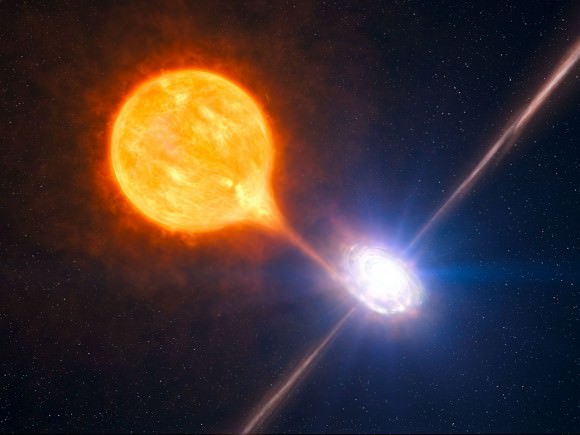I’ve seen some pretty incredible things with my eyes. First, of course, there’s the stunning sight of a dark, star-filled sky, and then there’s the incredible sight of the Andromeda Galaxy 2.5 million light-years away. Of course, you can also see planets as they move slowly across the sky, but it’s a little more unusual to see something that reminds us that the universe is changing. Well, in a few weeks we have an opportunity. The star T Corona Borealis (T CrB) will brighten about 1,500 times so it can be seen with the naked eye. Miss it though and you’ll have to wait another 80 years!
It’s always exciting to see something new in the sky. It doesn’t happen that often, but when it does, it’s definitely a chance to get out and enjoy the show. The event is a nova, which translates from Latin and means “new.” In astronomy we talk about nova as a number of different phenomena that herald the appearance of something new visible in the sky. A supernova is a common example of a colossal stellar explosion.
In the case of TCrB, it refers to a binary star system in which a white dwarf star (the remains of a star such as the Sun) is in orbit around another star. I need to clarify that statement: they both revolve around a common center of gravity. At 3,000 light-years away, it is one of the closest of its kind, so if it erupts, we will be able to see it without any telescope or binoculars, just the ‘Mark-1 eyeball’.
The process that leads to the sudden enlightenment is really quite fascinating. The white dwarf star has a much stronger gravity than its companion. As a result, it drags material from its neighbor in a process known as accretion. Over time – and in the case of T CrB it takes about 80 years – hydrogen accumulates on the white dwarf. The hydrogen layer is heated by the white dwarf, causing it to heat up to critically high temperatures, high enough to initiate hydrogen fusion. The layer of hydrogen explodes and is ejected from the white dwarf in a brightly glowing, hot shell. Here on Earth we see this as a sudden brightening of a previously rather inconspicuous star, which would normally require a telescope.
Novas are generally quite unpredictable, usually occurring once and often leading to the death of a star, but in this case it happens every 80 years. We call this event a recurrent nova. The eruption was first seen in 1866 by an astronomer named John Birmingham, who funnily enough was from Ireland and not Birmingham. It was observed again in 1946, when a drop in brightness occurred before the explosion, and it is this drop in brightness that has just been observed in the past few months.
This all points to the fact that the next nova event is imminent, maybe not for another month or two, so if you like me and would like to see this unique event, then it’s time to put on your coat and get outside to go. Unfortunately, because we don’t know exactly when this will happen, the best approach is to simply familiarize yourself with the sky in the region of the Corona Borealis constellation.
Fortunately, Corona Borealis is in a fairly ‘quiet’ part of the sky with not too many bright stars. To find it where you are, you then use an app on a smartphone to locate Vega in Lyra and Arcturus in Bootes. Corona Borealis is located approximately between the two and somewhat resembles a semicircle of stars. Get to know that part of the sky and get to know the stars that are visible to the naked eye. Keep watching over the coming weeks and months (and of course, keep an eye on Universe Today) and soon you’ll see a ‘new’ star appear just outside the semicircle.
Good luck and clear skies.
Source: Keep your eyes on a new star, as a once-in-a-lifetime cosmic explosion looms
